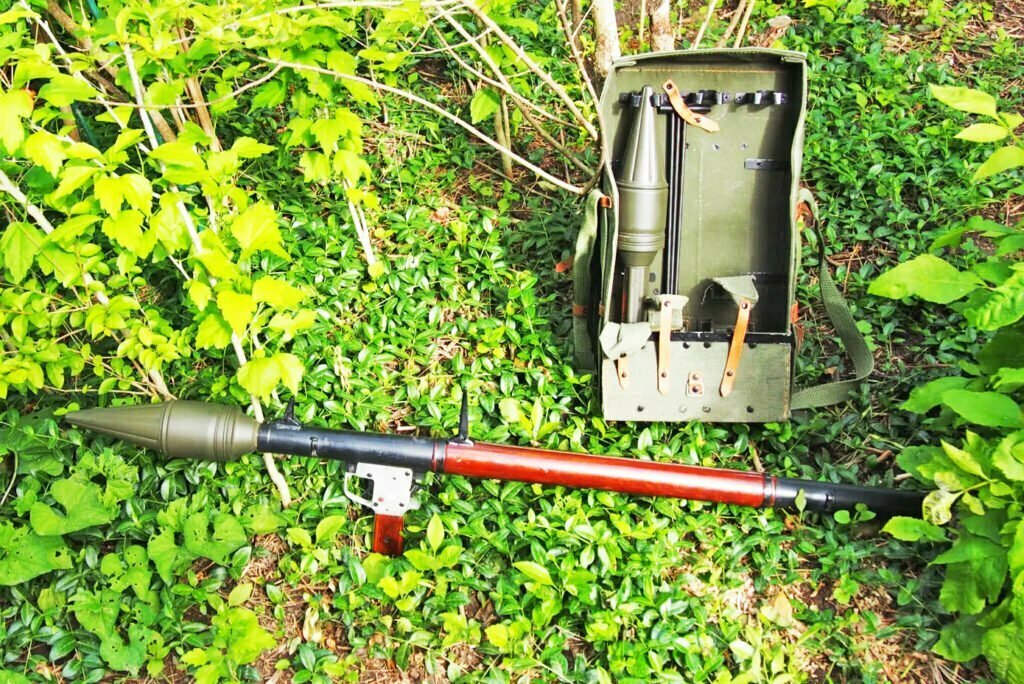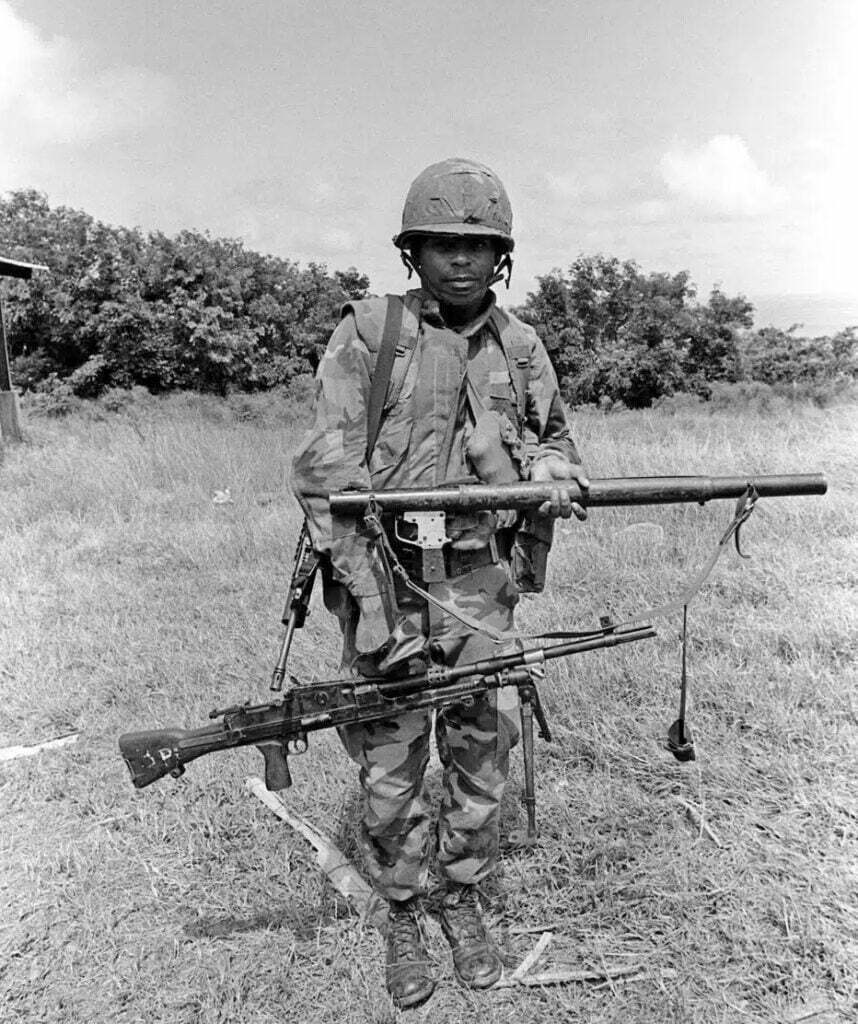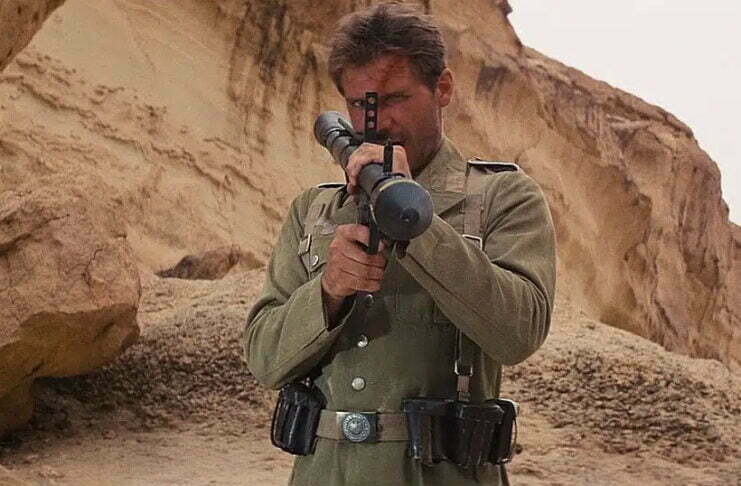Near the end of the 1981 adventure epic Raiders of the Lost Ark, hero Indiana Jones (Harrison Ford) could be seen holding a shoulder-fired anti-tank weapon. For a film that featured everything from a lost buried ancient city to a fantastical “flying wing” aircraft (not to mention the tablets that contained the 10 commandments), that weapon is probably not the most unrealistic item to be seen. However, it is a serious anachronism that history buffs will notice immediately.
RPG-2: The Original Combloc Anti-Tank Weapon
by Peter Suciu, The Armory Life
Set in 1936, no nation had actually developed a “man-portable” anti-tank rocket launcher, and it wasn't until 1943 that the American M1 “Bazooka” was first deployed on the modern battlefield. A rocket launcher like the one Indy was seen holding was still a few years over the horizon.

However, the plot called for the tomb-raiding archeologist to have a weapon that could potentially destroy the biblical Ark of the Covenant and the Nazi soldiers surrounding it. Thus, the movie's armorer, Simon Atherton, created a custom — and non-functional — rocket launcher that was actually based around a Chinese Type 56, a copy of the Soviet RPG-2.
Atherton did a good job with his mock-up, which was outfitted with a shoulder grip similar to the M9 “Bazooka” along with a venturi tube-style rear muzzle. The resulting design closely resembled the conceptual Panzerfaust 250, a reusable variant of the single-use Panzerfaust that Nazi Germany developed at the end of the Second World War.
While Jones could have carried such a launcher, the RPG-2 on which it was based was notable for being among the first truly successful anti-tank weapons of its type.
RPG-2 Origin
During the early stages of the Second World War, the British military were among the first to see the need for a man-portable anti-tank weapon and subsequently developed the Projector, Infantry, Anti-Tank (PIAT), which was based on the spigot mortar system. It came with a number of tradeoffs — while it had no back-blast and was simple in construction, it had considerable recoil and was rather difficult to cock, especially for a prone soldier.

The United States military, which also saw that infantry soldiers lacked a capable means of countering tanks, went another direction and developed the M1 Bazooka. Despite some early issues, it proved to a successful rocket-propelled anti-tank weapon that could be employed by a lone soldier, and not surprisingly was widely copied. The Soviet Red Army, which had come up with various “ingenious” ways of countering enemy tanks — including strapping bombs to dogs and detonating the explosives from a distance — devised a unique man-portable anti-tank platform that borrowed liberally from other designs, notably the American bazooka and Germany's improved version, the Panzerschreck; but also the aforementioned disposable Panzerfaust.
In 1944, the Soviets started work on the RPG-1 — Ruchnoy Protivotankovy Granatomyot-1 (Hand-held Anti-tank Grenade Launcher-1) — a lightweight anti-tank rocket that was equipped with a shaped charge warhead. Unlike the American bazooka, which featured a tube where the rocket-powered round was loaded from the rear of the muzzle, the RPG-1 was loaded from the front more like the Panzerfaust. But unlike the single-shot German weapon, the RPG-2 could be reloaded.
As noted, the Germans had considered such a weapon, the Panzerfaust 250, but never really made it past the prototype stage. How much that weapon lent to the RPG-1 design is unclear, but as the AK-47 likely borrowed at least some aspects of the StG44 — Germany's infamous assault rifle — one can only speculate that German designs were at least reviewed at some point.
Work on the RPG-1 continued until 1948, but it was failed to meet expectations — most notably the fact that it was accurate only to about 160 feet (50 meters) and couldn't penetrate the armor of late-war tanks.
Instead, the designers began anew and the result was the RPG-2. It is important to stress that the moniker was not for “rocket propelled grenade,” but essentially it was abbreviation of the Russian that translated to hand-hand anti-tank grenade launcher. In many ways, it was essentially meant to provide the best characteristics of the M1 Bazooka and the Panzerfaust, including being low-cost to produce, easy to load, compact to transport and offering a high-rate of fire.
It was made of stamped steel that was covered with wood to protect the operator from the launch heat. It was also light and compact enough that it could be comfortably used by a single soldier; but in practice, at least two people were really needed to operate the weapon to its maximum effectiveness.
As with many Soviet weapons, it was designed to be easy to operate. The RPG-2 round would be inserted into the front of the barrel, a hammer on the pistol/trigger grip was cocked and it was ready to be fired. It was effective against move targets out to range of 100 meters, but could be employed against stationary targets such as buildings and fortified positions to upwards of 150 meters. Its optics were in a word, “basic,” and involved just a flip-up iron sight.
Unlike with other anti-tank weapons, the RPG-2 was only produced as a fin-stabilized High-Explosive Anti-Tank (HEAT) round. It was designed to be able to penetrate upwards of 200mm of Rolled Homogenous Armor (RHA) — which meant that it lacked the capabilities to take out a main battle tank (MBT).
However, the weapon's simplicity, light weight, low cost and ease of use made it a popular option — and it was better than no anti-tank weapon at all.
The RPG-2 Goes to War
While it was officially introduced into service in 1949, production was slow and as a result, none were reported to have been used in the Korean War (1950-53). It would have likely been fairly effective against the armor employed by the United Nations coalition, but by the time the weapon was produced in large numbers in the mid-1950s, the RPG-2 was largely already obsolete.
Read the article in its entirety on The Armory Life.



